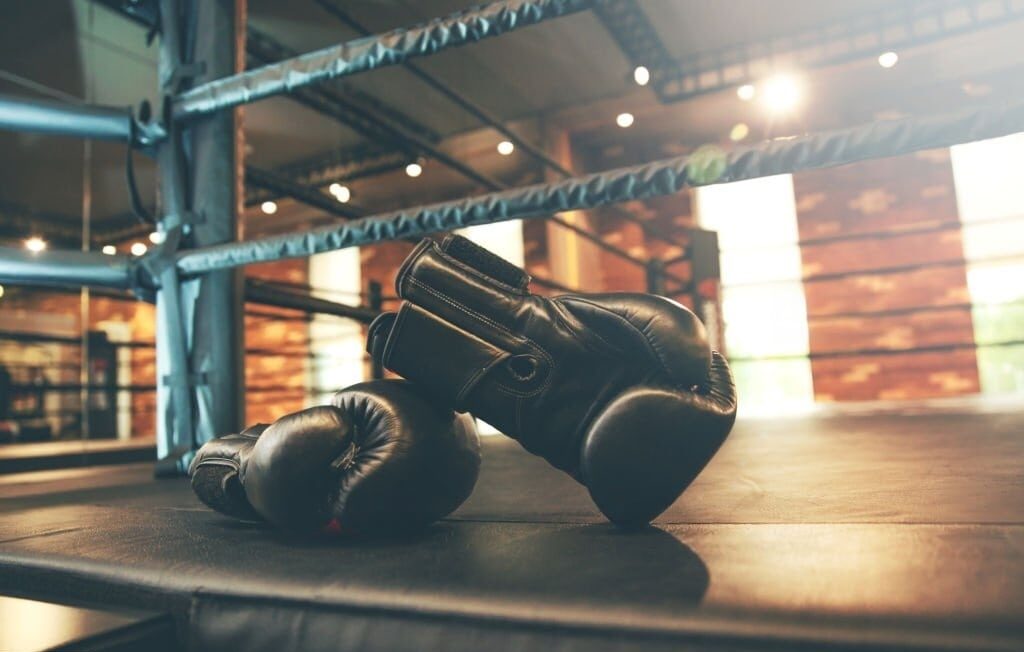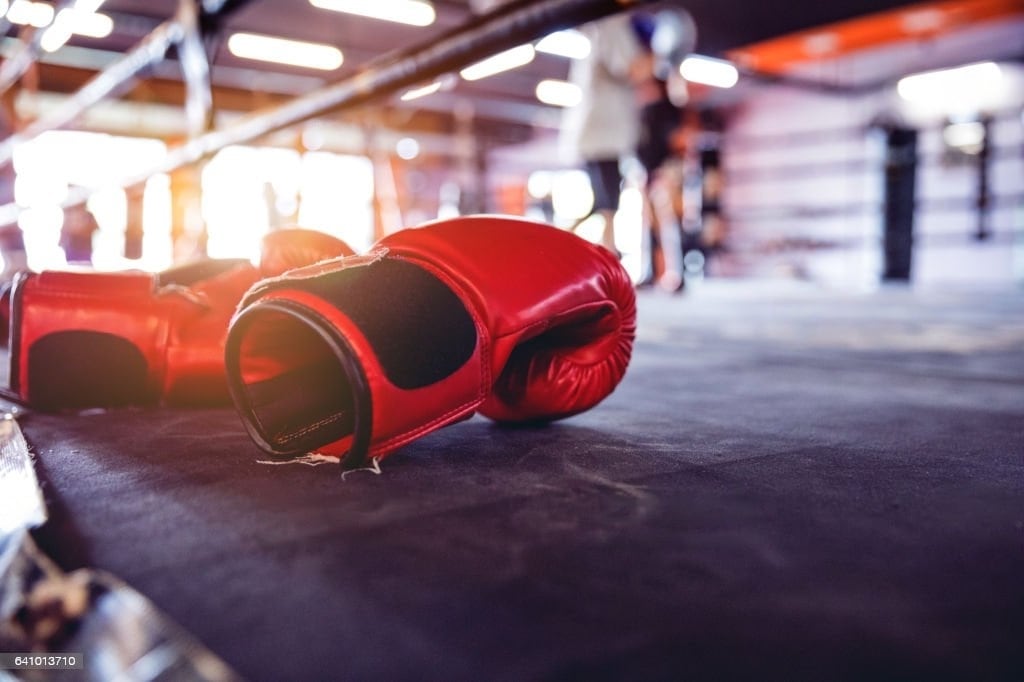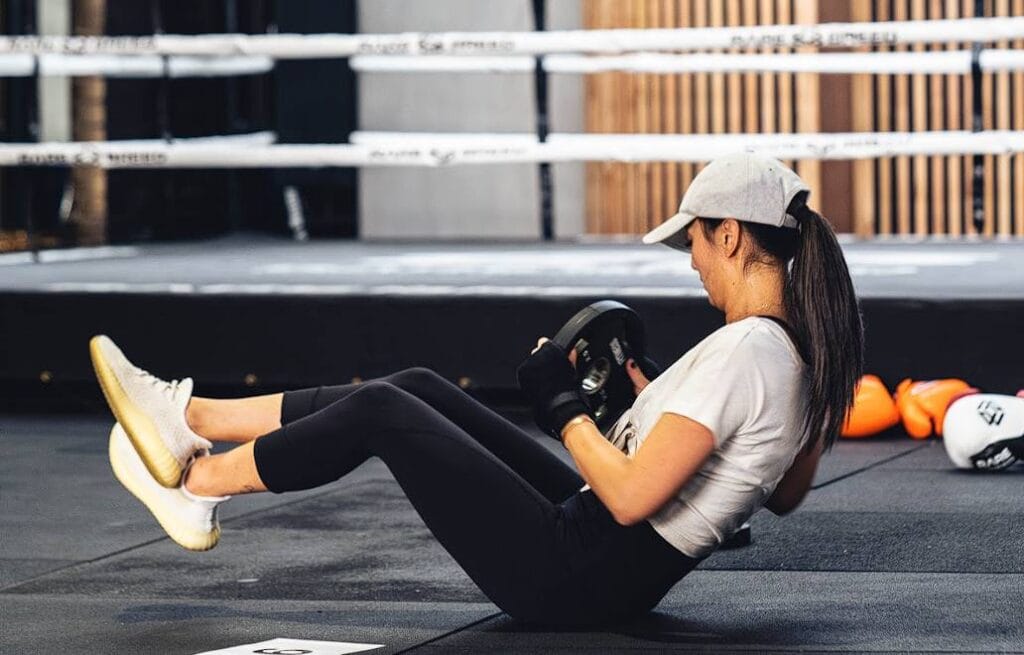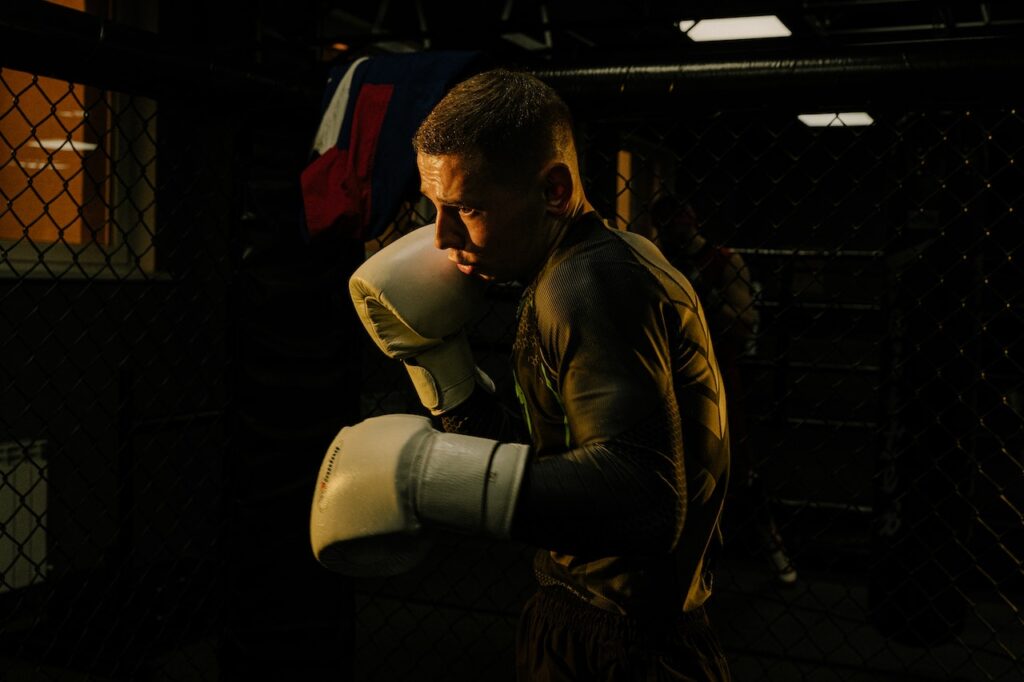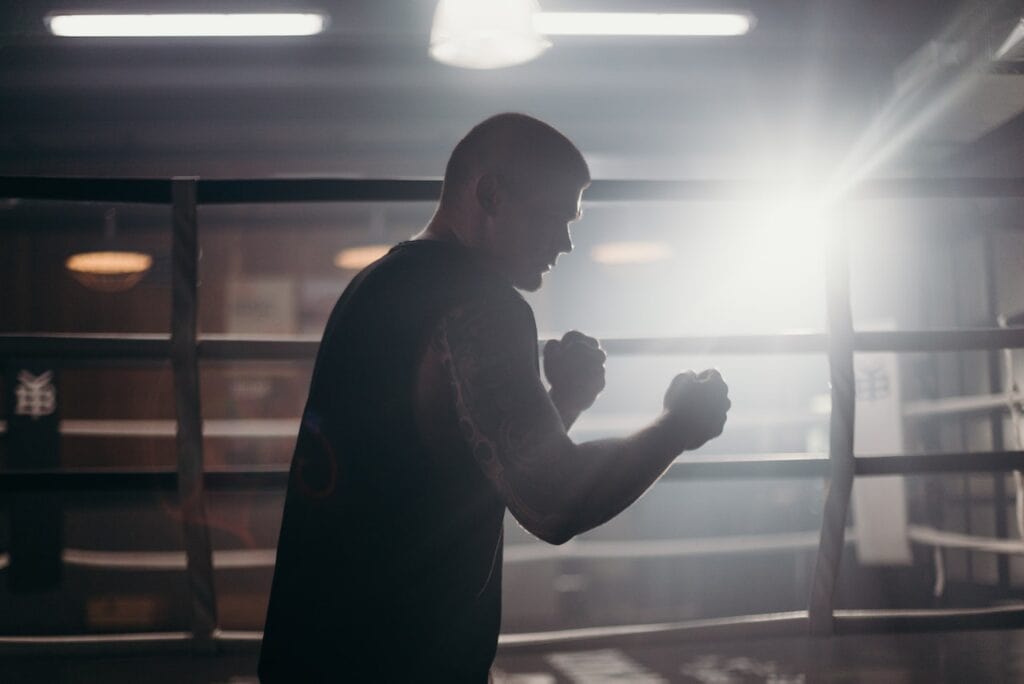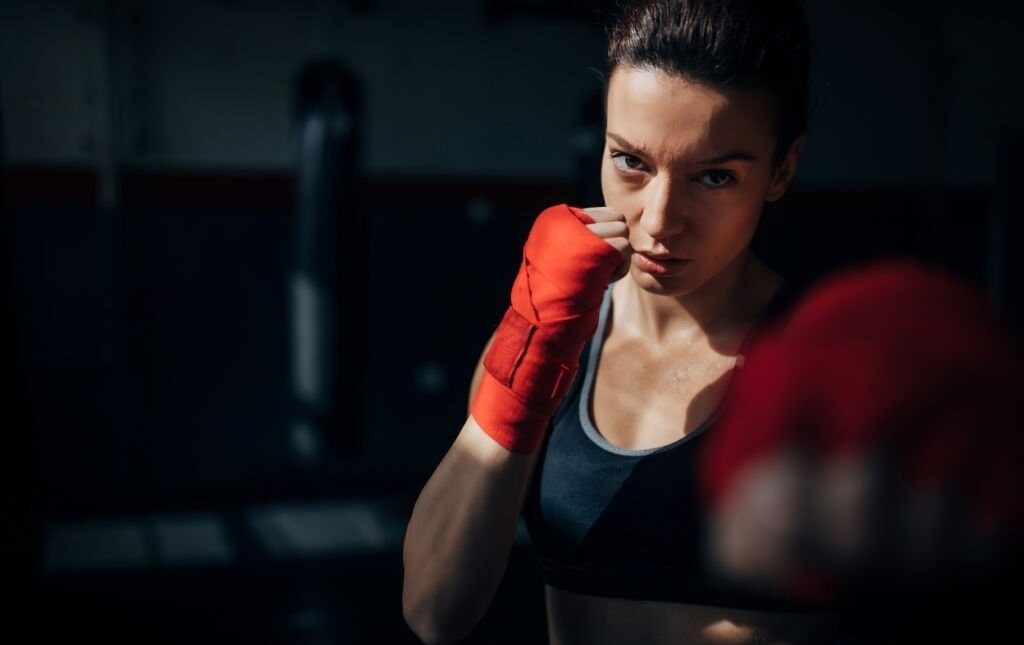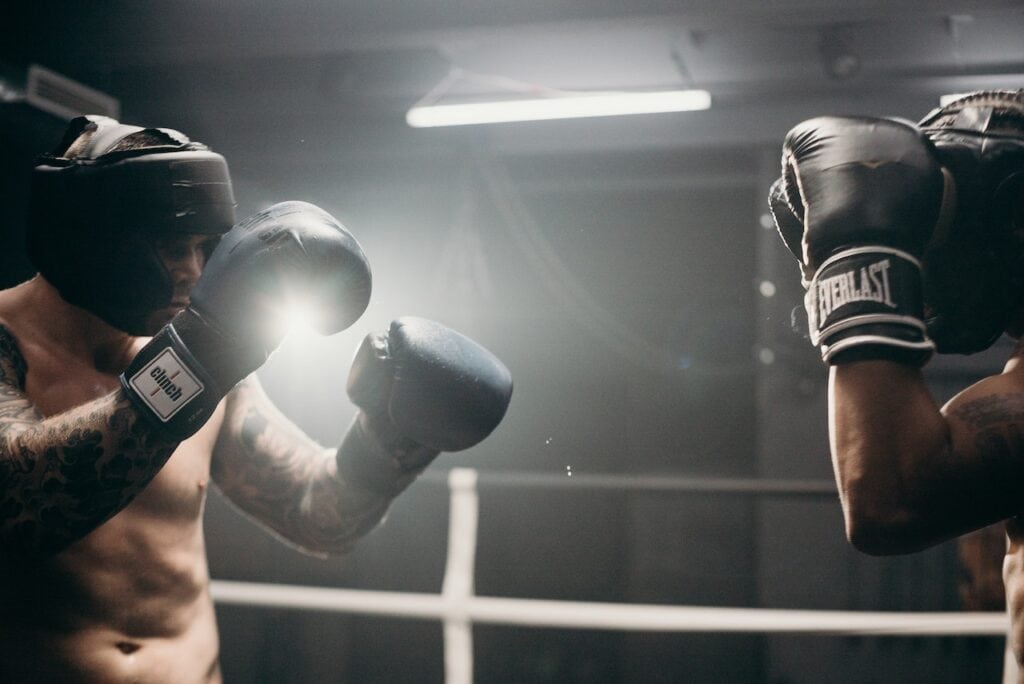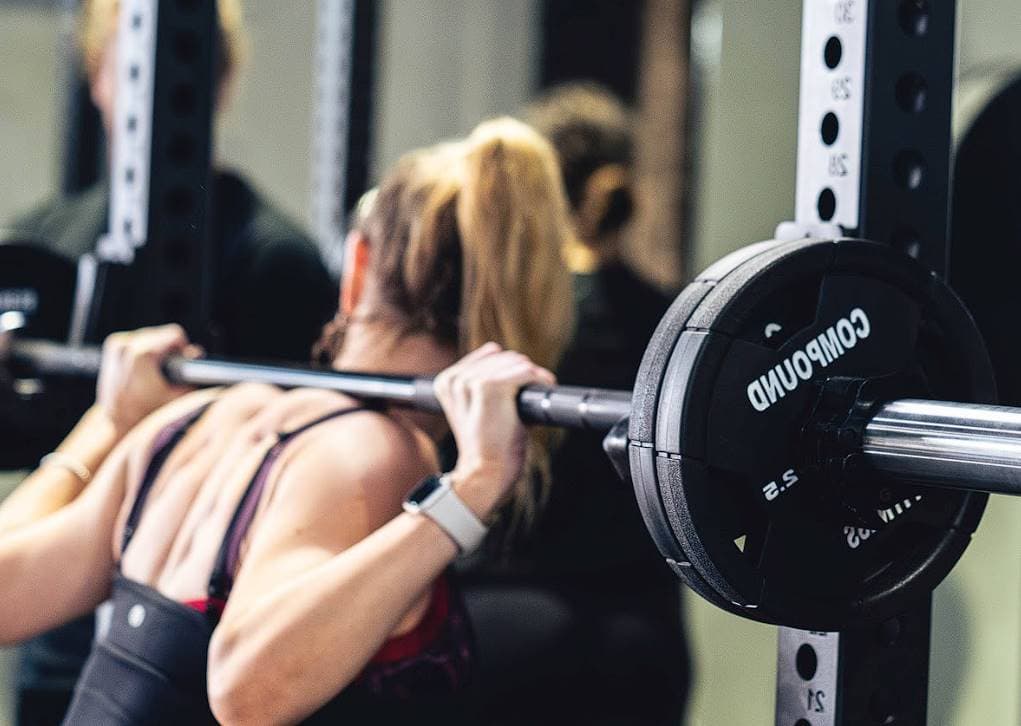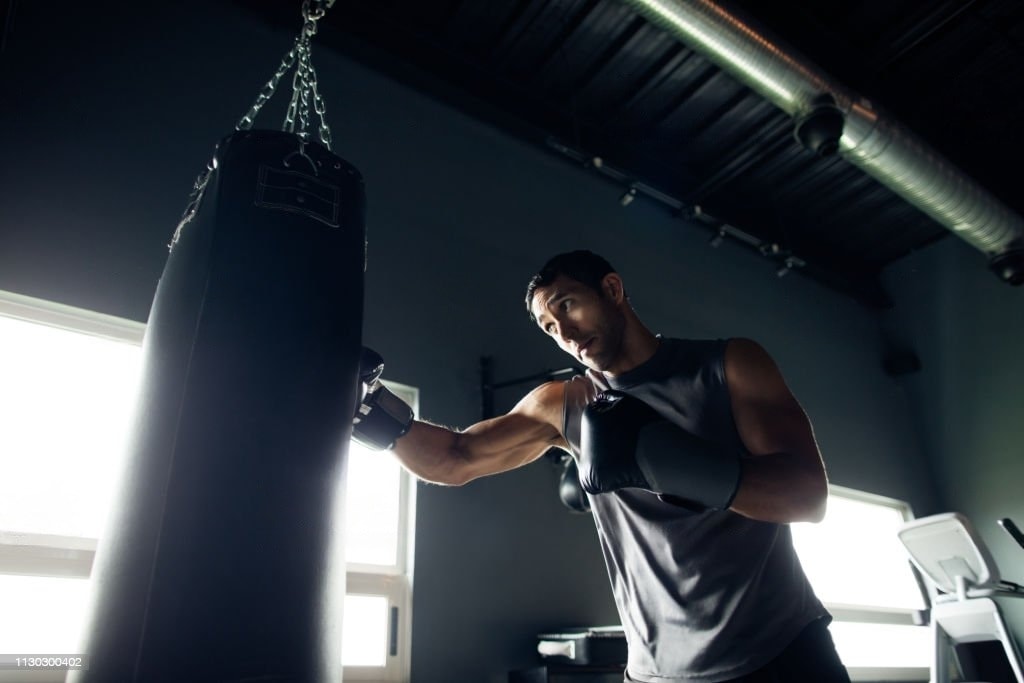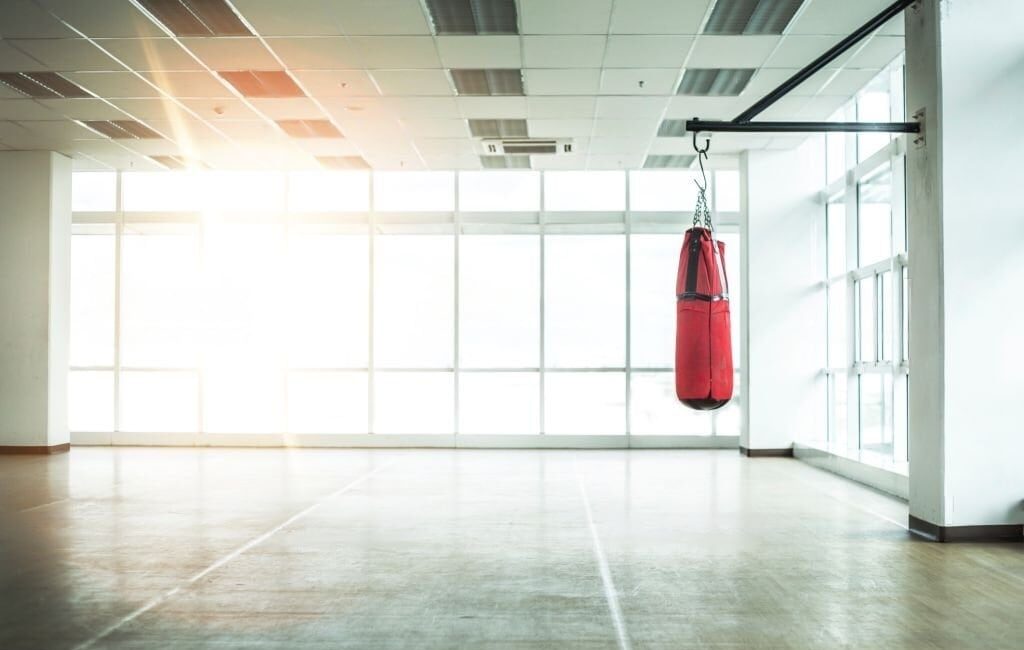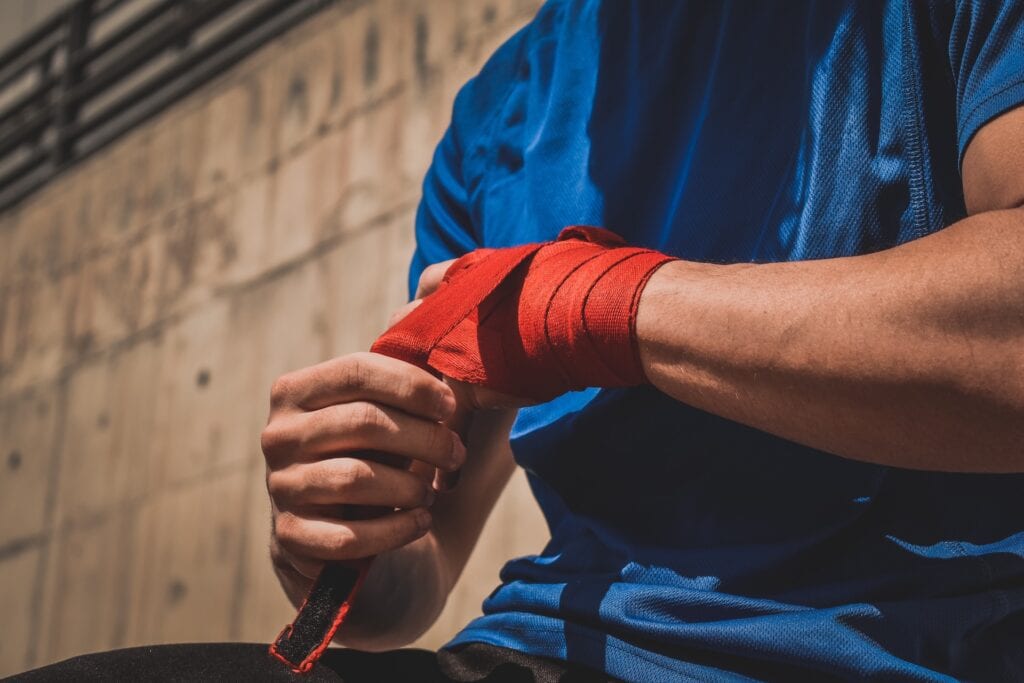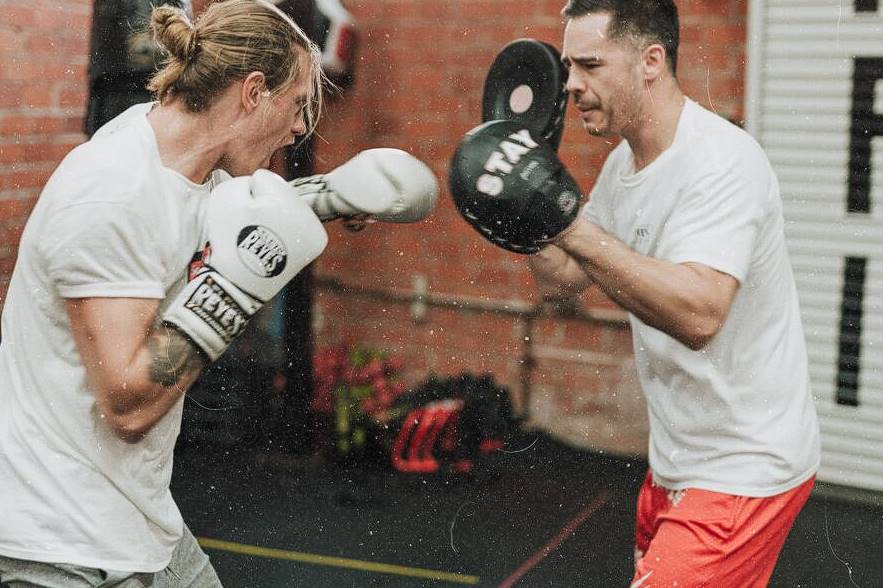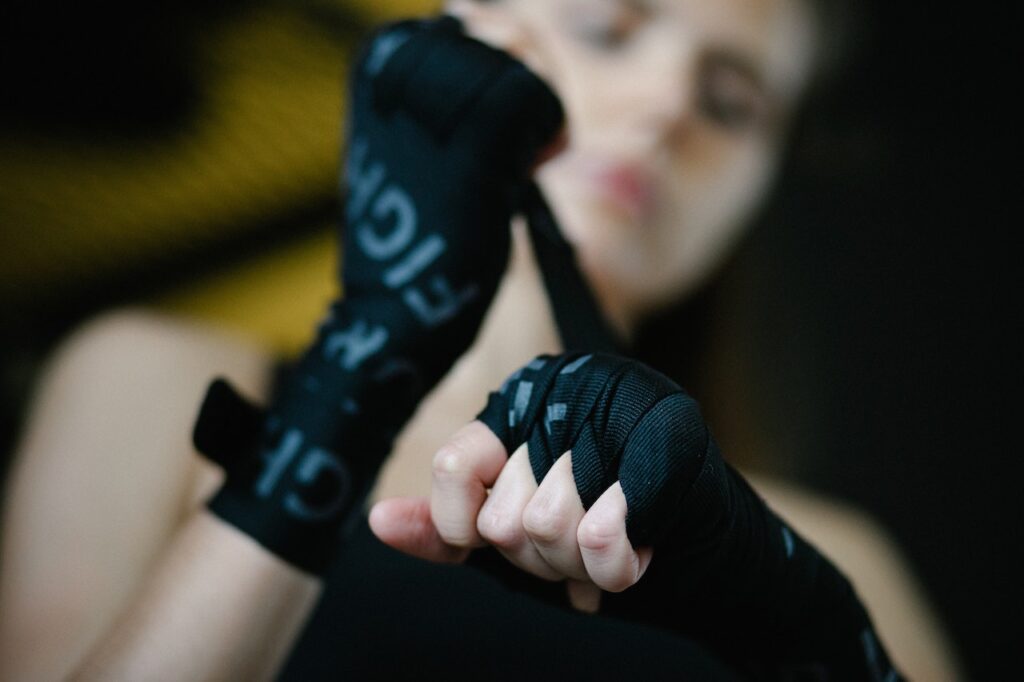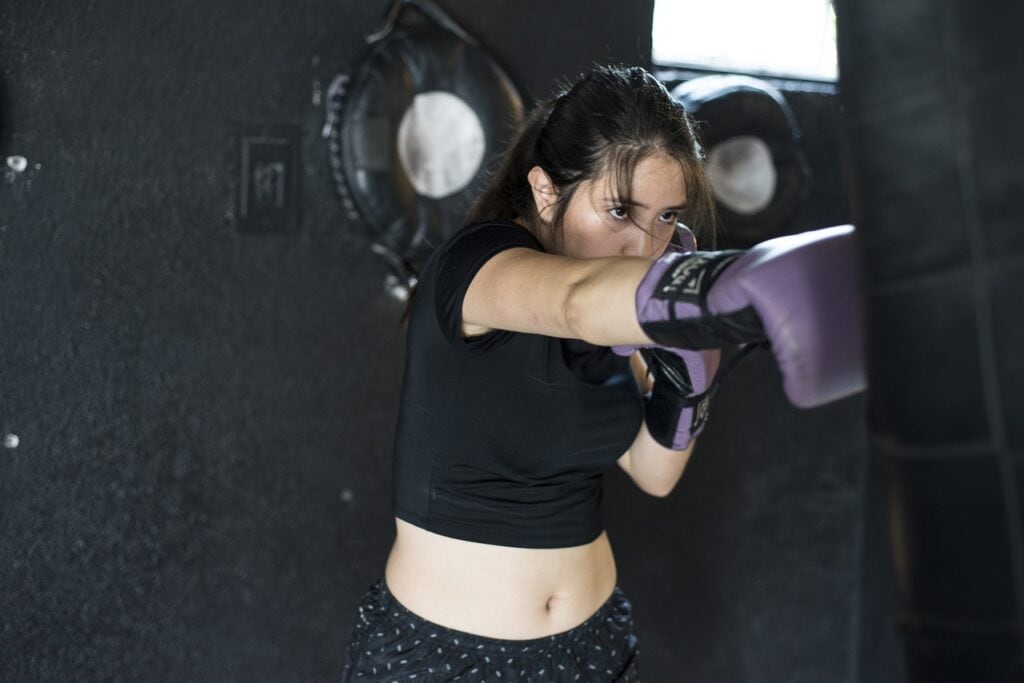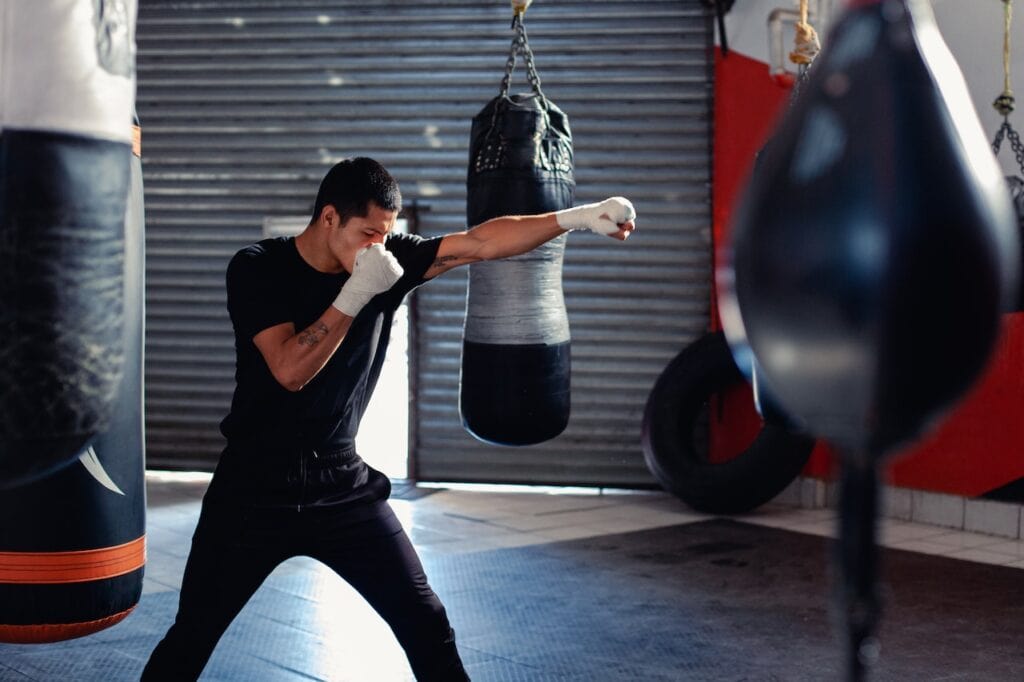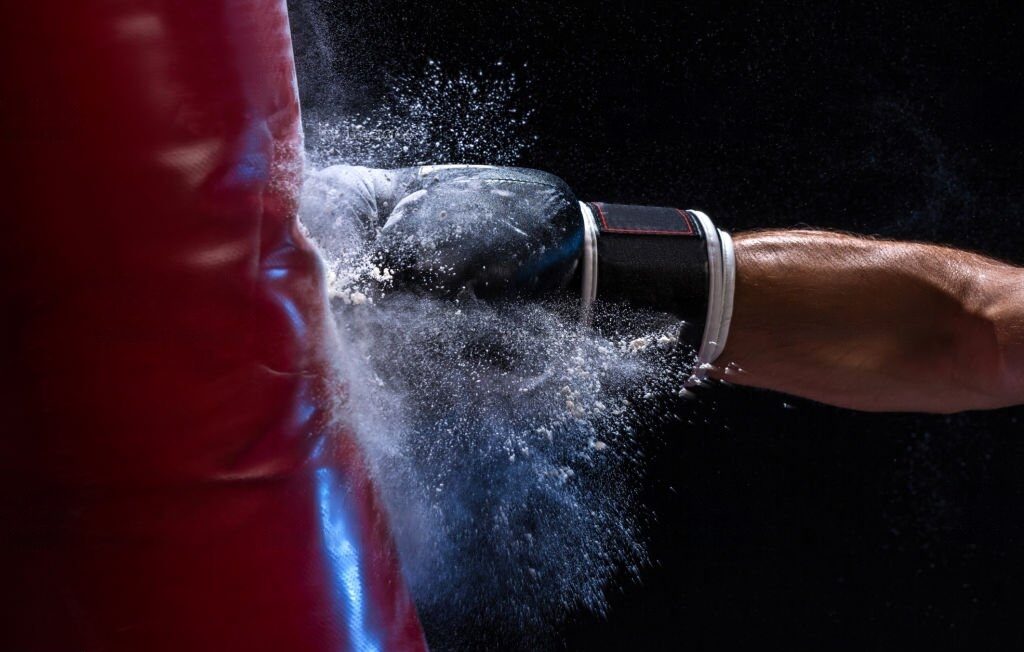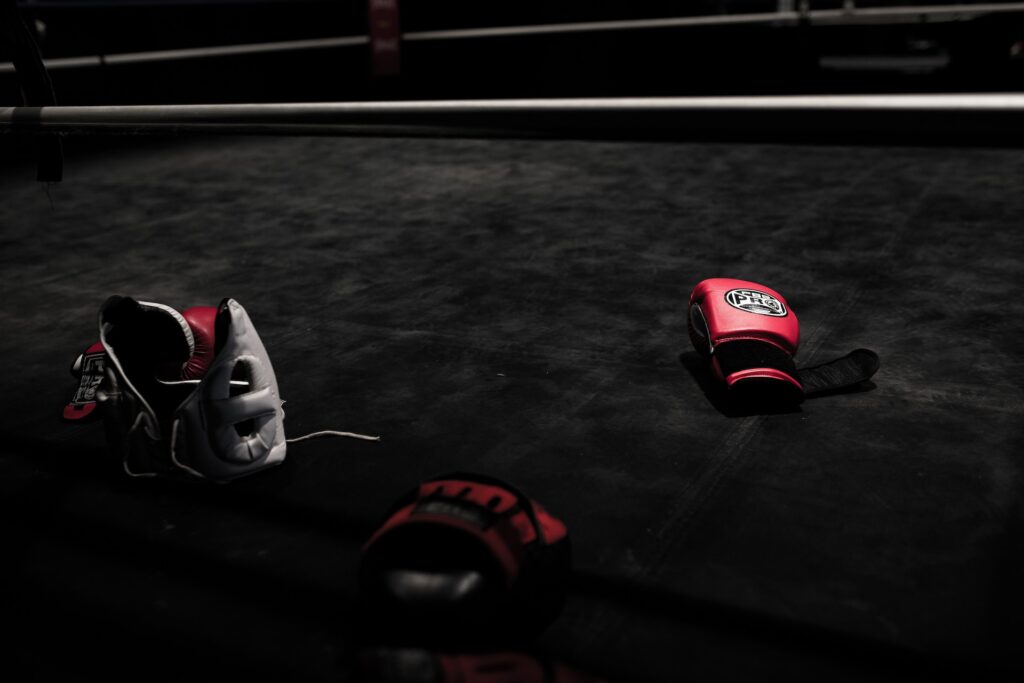Boxing is a physically demanding sport. It is quite taxing on the body and will almost always leave you with more than just a scrape or a scratch due to your participation. Even though most injuries occur inside the ring, boxers also sustain many injuries when training in the gym.
It takes more than simply having powerful punches to make a good boxer. No matter how violent the professional boxers may appear in the ring, they always consider the precautions they can take to avoid getting injured while boxing or even training. It is true whether they are boxing or training.
Most boxing trainers focus on teaching their boxers tactics that successfully reduce the risk of injury. Of course, the only thing that matters in boxing is hitting your opponent with punches and landing your fighting combos, but there are other aspects.
As a fighter, you must be aware of how to avoid getting hurt; only then will you be able to improve your skills over time.
Top 10 Tips For Preventing Injuries
Because it is common knowledge that preventing illness is preferable to treating it, I have compiled a list of ten things you may do to lessen the likelihood of getting an injury.
- Take care of your physical being. It requires you to ensure you are drinking enough water and consuming the proper meals at all times, even when you are not in camp. Everything begins on the inside and works its way out.
- When engaging in sparring, both you and your partner should always, and I mean always, wear some head protection. It will protect you from getting cut during head clashes, and it will also protect your hands because you will be hitting a padded head guard rather than a hard skull.
- Do not engage in combat with a moron! Maintain your composure. I remember Carl Froch understanding this better than anyone else when we were sparring together; he knew we were both there to learn and even mentioned this to me before the training session began.
- It would always help to protect your face with oil to avoid getting cut when sparring. What happens if you give a dry leaf a good squeeze? It shatters into a hundred different parts before finally crumbling to pieces. What happens when you squeeze a leaf that still has some moisture in it? Nothing. Because of the way that it bounces back into position, you are likely to cut yourself if your skin is dry. Additionally, the grease makes it easier for the punches to slide off.
- Invest in a few pairs of quality gloves that can be used for both sparring and training. Your hands are your most important instruments. Thus you must provide them with enough support at all times.
- Remember to wrap your hands before each session properly; this is good practice. If your hands are damaged while playing this game, it will affect every aspect of your performance. Believe me when I say I am the most knowledgeable person. It affects your emotional state as well. When you're in a battle, the last thing you want to be concerned with is how much power you can put into your punches because your hands are hurting.
- Perform the appropriate warmup and cooldown. Make it a habit to stretch before and after every workout to get your body ready for the strain that will be placed on it by the activities you will be performing.
- Please wear the appropriate footwear and socks, but ensure they are comfortable for you. For example, do not go for a jog of five miles outside on the concrete while wearing a pair of boxing boots. I know what you're thinking: who would do such a thing in their right mind? But honestly, I've witnessed this more than a few times.
- If you run at night, you should aim to do so in areas with plenty of light.
- Tell your trainer if you could injure yourself a little, and ask them to adjust your routines.
Common Boxing Injuries & How to Prevent Them
MOST COMMON BOXING INJURIES
Boxing competitions in the ring and face-to-face bouts with opponents are two of the most typical situations in which boxers sustain injuries. These include lacerations and other injuries to the face and concussions. However, even if your box is at home, you are still at risk for boxing-related injuries, particularly if you do not practice with the correct form and technique and use equipment up to standard.
BOXING TRAINING INJURIES: WRIST, HAND, AND FINGER INJURIES
What are wrist, hand, and finger injuries in boxing?
Hand injuries are the second most prevalent type of injury sustained in boxing for amateurs and professionals (Loosemore et al.), and person boxing training at home may be at high risk for these injuries owing to inappropriate technique, form, and equipment.
In bouts of competition and while punching the heavy bag at home for practice, errant blows can cause muscle strains in the hand or wrist (Holland). Stress fractures are a type of bone damage repeated blows can cause to the same area, such as punching or striking. Using improper techniques enhances the risk of injury.
How can you prevent wrist, hand, and finger injuries in boxing?
During boxing training, use the appropriate gear to protect your wrists, hands, and fingers from getting injured. Whether punching the heavy bag or going up against an opponent in the ring, protecting your hands and wrists with boxing hand wraps and gloves will provide you with the padding and support you need. In addition, when you are training, you should acquire the proper form and technique for punching.
For instance, when landing a punch, you should allow the first two knuckles to lead and avoid twisting into the wrist. Finally, paying attention to your body and reducing the intensity of your boxing workouts if you experience any new or severe pain in your hand or wrist is important. If you may have experienced an injury, you should get it checked out as quickly as possible by a trained medical practitioner.
How to modify boxing training for wrist, hand, and finger injuries
Strains and sprains of a minor nature need to be treated with rest, ice, and protection. You may require a splint or cast if you have sustained more severe injuries to your wrist, hand, or fingers. In any event, the best course of action is to reduce the intensity of your boxing workouts or take a break entirely until you have fully recovered. If you strike while you have a broken wrist, hand, or finger, the damage worsens and takes you longer to recover.
SHOULDER INJURIES
What are shoulder injuries in boxing?
The most effective technique to deliver a heavy blow is to begin the motion from the feet, move up the kinetic chain while amassing forces, and then deliver it via the shoulder to the hand (Mansfield).
Unfortunately, boxers put themselves in danger of suffering rotator cuff strains and labral and rotator cuff tears due to their sport. In addition, people who box regularly risk developing chronic shoulder pain or illnesses such as impingement or bursitis throughout their careers (Ruotolo).
How can you prevent shoulder injuries in boxing?
The importance of punching with the right form cannot be overstated. It would help if you learned the correct boxing technique before beginning any boxing training at home, especially when you are first getting started.
On the FightCamp app, the FightCamp Trainers walk you through step-by-step tutorials and provide you with workouts to help you learn everything you need to know. If you're starting, it's important to have the advice and direction of seasoned experts to build a solid foundation and get the education you need.
In addition to the rotator cuff and scapular strengthening exercises you can do independently, you can also do scapular strengthening exercises. When protecting one's shoulder against injury, having well-developed shoulder muscles can make all the difference.
How to modify boxing training for shoulder injuries
You should reduce the intensity of your boxing training or stop it altogether while you recover from the shoulder injury. One of the potential treatments for impingement or bursitis is to lessen the intensity of your workouts or the number of times you do them.
In addition, if you have strained or torn your rotator cuff, you may require physical therapy to improve the strength of your scapular muscles and reduce the amount of biomechanical stress placed on your shoulder. If you have either of these injuries, it is important to follow your doctor's instructions and avoid activities that worsen your shoulder pain.
CHRONIC BACK AND NECK PAIN
What is chronic back and neck pain?
Most regular, non-athletic populations suffer from low back discomfort at some point (NIH). For example, if you have bad posture or weak core and glute muscles, you may be at risk for developing low back discomfort, which can be incapacitating. In addition, grappling, the impact of hits, or an improper fighting stance can frequently cause neck and back pain for sports and boxers (Holland).
How can you prevent chronic back and neck pain?
Over time, the body can get stressed from the repetitive forces from training or fighting, exacerbated when form and posture are not maintained properly. Having the assistance of a professional coach or trainer is the best way to ensure that you are using the correct boxing technique and that your movements are safe and biomechanically efficient. It is true regardless of your experience level, but it is especially important for those just starting out.
When your box at home, it can be challenging to determine whether or not you are training appropriately and whether or not you are putting yourself in danger of injury. You may learn how to box at home with the help of our experienced trainers by downloading the FightCamp app, which offers you access to boxing and kickboxing lectures and workouts with them.
Beginning with the fundamentals, like the correct fighting stance and alignment, and working your way up to more complex movements, footwork, and finally, boxing punch combos is the best method to learn the sport. Learning the fundamentals first can assist you in warding off long-term and persistent injuries, such as those that cause pain in the neck and back.
How to modify boxing training for chronic back and neck pain
The important thing is to take precautions. It would help if you focused on strengthening the core (abdominals and back), glute, and scapular musculature to minimise the burden of chronic back and neck discomfort. It will include the shoulders. In the long run, these injuries can be avoided by following a comprehensive training program that includes both stretching and strengthening.
In addition, if you suffer from chronic back or neck discomfort and exercise, you should always include a warm-up and a cool-down in your routine. It will ensure your body is loose before engaging in strenuous activity.
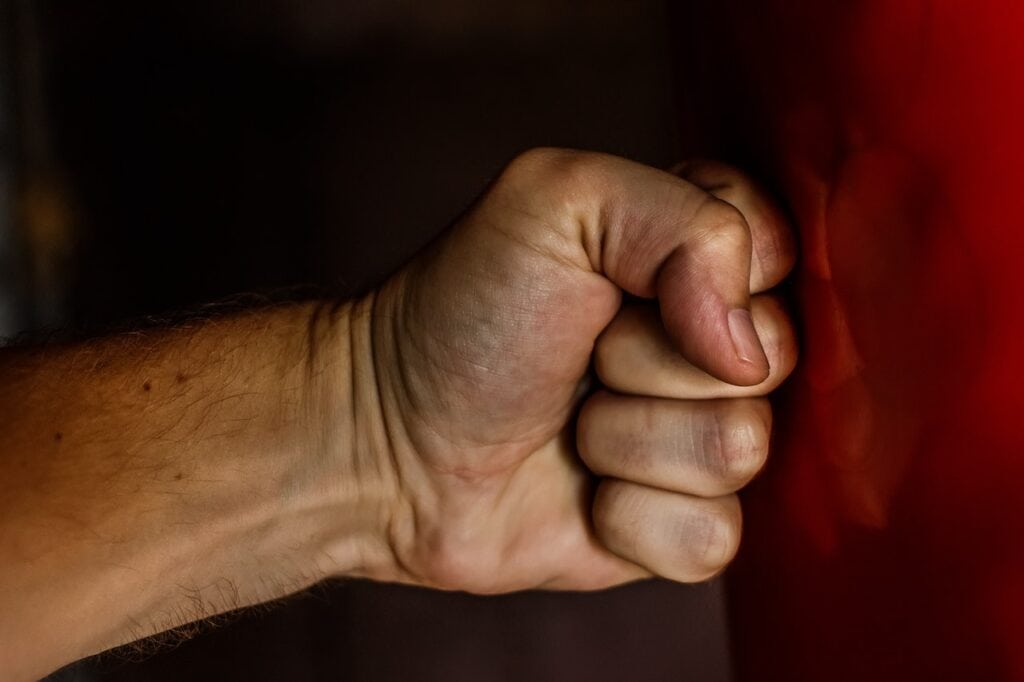
BOXING INJURIES IN THE RING
Boxing is a sport in which only certain people should attempt to compete. If you are only interested in boxing as a kind of exercise, you won't necessarily be at risk for the following injuries.
FACIAL LACERATIONS
What are facial lacerations in boxing?
In boxing, the most common type of injury sustained is a cut to the face due to being hit by another boxer (Bledsoe, Li and Levy).
How can you prevent facial lacerations in boxing?
It is possible to prevent or lessen the severity of facial injuries by wearing the appropriate headgear. Include a rest period as part of your routine for optimal results. Evidence shows that a decrease in sleep duration of fewer than eight hours per night can raise the risk of damage by as much as 70 per cent (Active and Safe).
If you haven't gotten enough sleep, you won't be able to respond and protect yourself effectively against an adversary, increasing the likelihood of getting an injury.
Before a match, boxers may often apply petroleum jelly or Vaseline on their faces and any other areas of their bodies that strikes could damage. It helps to make the skin more elastic, slick, and resistant to tearing. If an accident does occur, this can also assist in slowing bleeding.
How to modify boxing training for facial lacerations
Most cuts will heal independently with only a small amount of medical attention. However, if you need stitches or suffer a more severe injury like a broken nose, you must take a break from fighting and training until you completely recover. When injured tissues are subjected to another impact, it will simply make the damage more severe.
FACIAL INJURIES
What are facial injuries in boxing?
You can expect to sustain facial injuries when going head-to-head with an adversary. Boxing causes more than three-quarters of all facial injuries, most of which are cuts and other superficial wounds (Zazryn et al.). In addition, punches that hit the area around the eye can cause the tissues around the eye to swell and develop bruises (Inalsingh and Aberdeen). A broken nose, teeth, or jaw is one type of facial injury that occurs less frequently.
How can you prevent facial injuries in boxing?
Refining your reflexes and enhancing your ability to defend yourself can also be accomplished through training at home with trained specialists such as FightCamp. During matches, appropriate protection equipment, including headgear, should be used. As was just discussed, putting petroleum jelly on your skin before getting into a fight will prevent skin tears and excessive bleeding.
How to modify boxing training for facial injuries
When dealing with swollen tissues, using a cold compress or ice pack is essential as quickly as possible. Make sure any open wounds are kept clean and checked for symptoms of infection (redness around the cut, yellow discharge, etc.). The majority of cuts that are only superficial will heal on their own with only a little bit of medical attention. If you have broken bones or lacerations requiring stitches, you should avoid engaging in combat until your injuries have fully healed. A medical practitioner has given you the all-clear.
CONCUSSIONS
What are concussions?
A hit to the head can cause a mild form of traumatic brain injury known as a concussion. You may pass out due to the impact of the blow, but it is also possible that you could remain conscious. Symptoms such as memory loss, disorientation, drowsiness, and headache can appear either soon after the injury or in the following days. Concussions, especially those that are severe or occur frequently, can have substantial long-term effects (Rezzadeh).
How can you prevent concussions in boxing?
In boxing, concussions are rarely sustained unless an adversary confronts the boxer. Therefore, your likelihood of suffering a concussion or other head injury is significantly reduced if your box at home instead of going to a gym.
In amateur boxing competitions, concussions are far more common than in professional bouts, accounting for almost half of the participants' injuries (H.R.F.). Training and working with an experienced coach can improve your boxing technique and lower your risk of developing a concussion. If you plan to spar with an opponent or are just getting started in competitive boxing, use protective equipment such as a helmet.
How to modify boxing training for concussions
Boxing and other forms of physical activity should be avoided until a medical practitioner gives you the all-clear to resume such activities after suffering a concussion. It is because even modest concussions can have long-lasting effects on cognitive functioning and attention (Hugenholtz, H et al.).
8 Essential Safety Tips For Boxing
1. Wear the Right Gear
Entering the ring with the appropriate protection is essential to keep your body safe while you are fighting. You need to make sure that you have the following protection equipment, all of which should fit you well and be in good condition:
- Boxing gloves
- Wrapping by hand
- A guard for the head
- A dental guard for the mouth
- When necessary, a chest guard
- When necessary, a groin guard
- Appropriate clothes to absorb sweat
- Boots used in boxing
Wearing protective gear during a boxing bout could mean the difference between walking away from the fight with a few small bruises and walking away without your teeth. It is the responsibility of a boxing coach to decide which kinds of boxing equipment should be utilised for which kinds of fighting or training. Boxer needs to ensure that their equipment is comfortable and does not restrict their movement.
2. Use Petroleum Jelly
Petroleum jelly, one of the book's oldest secrets, helps prevent severe face lacerations and friction burns. Petroleum jelly may be found in most drug stores. In addition, applying petroleum jelly to your face assists in deflecting strikes from your opponent by making it easier for them to glide off the face.
Petroleum jelly can also help treat small skin abrasions and wounds, and applying it after friction burns can also benefit the healing process. Its emollient properties help to soothe the skin and act as a barrier between exposed wounds and the outside elements. In general, though, cuts that are significant and bleed need to be cleaned and dressed as soon as possible after they occur.
To lessen the likelihood of irritation, select a petroleum jelly that is one hundred per cent pure and does not have any added perfumes or other ingredients.
3. Pre-Match Checks
Some pre-match checks must be completed to comply with the laws of the national governing body. For example, a pre-fight medical examination should be carried out on each participant in a boxing match by a qualified medical expert to guarantee that they are in good enough shape to compete.
Boxers should also be paired with one another according to their age (18–40, youth, junior, schools, minors, and adults) and their weight. Again, it is the responsibility of a boxing trainer to verify this well before the contest.
In addition, it is essential to take precautions to ensure that you have all of the necessary first aid supplies available. For example, make sure that your boxing first aid kit has been completely refilled, that there is an operational defibrillator on the premises and that you know where to find it. Because a cardiac arrest can be fatal in as little as 10 minutes, immediate action must be taken if one happens.
The England Boxing 2021–2022 Rule Book is where you can learn everything you need about boxing rules and the best practices for the sport.
4. Pre-Match Checks
Stretching is essential before beginning any boxing activity, whether a fight, sparring or just training with the bag. Warming up before a competition boosts your performance and makes it easier for your muscles and ligaments to handle the stresses of extending and moving quickly in various directions.
Boxers frequently suffer from sprains and strains, either as a direct result of a single action or as a cumulative effect of their continued participation in the sport. In the pre-boxing game, one of the most important steps involves stretching the chest, the arms, and the legs. In addition, remembering your neck and spine is crucial because these often-overlooked areas play important roles in evading punches and landing them.
Your body will be more prepared for a boxing battle if you include these three stretches in your training:
- Calf and Achilles Stretch in Standing Toe-Up Position
- Alternating Between a Reverse Shoulder Stretch
- Rotating Abdominal Stretch
5. Ice Injuries
Applying ice to a wound caused by impact can significantly enhance the trauma region and make the combatant feel more at ease. However, after receiving a hit to the face, blood vessels just under the skin have the potential to burst, which will cause blood to rush into the affected area and become trapped there. This condition, known as a haematoma, frequently affects the sensitive tissue in and around the eye (causing a black eye).
Icing a haematoma causes the blood vessels beneath the skin's surface to contract, which in turn slows and stops the occurring bleeding. It helps minimise swelling and brings the injury's intensity to a more manageable level. A muscle that has been strained or ripped, as well as a tendon that has been sprained, might all benefit from applying an ice pack.
When going into a boxing battle, it is best to have an immediate ice pack available to use as needed. It is unnecessary to store your ice pack in a freezer to keep it frozen because an instant ice pack utilises an endothermic reaction to chill down.
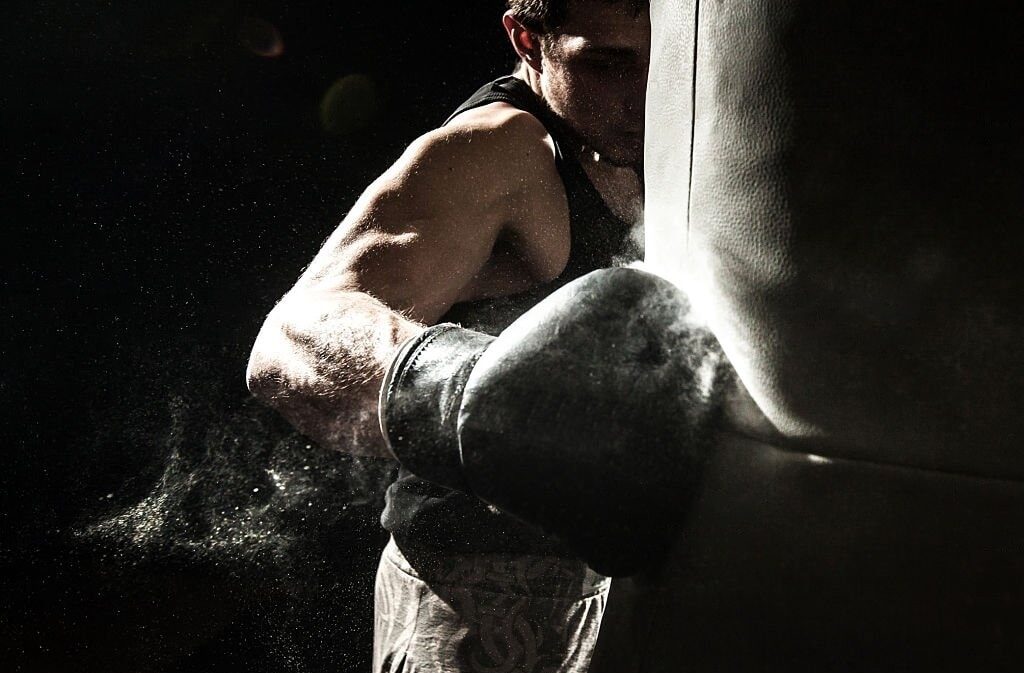
6. PPE and Infection Control
As a result of the pandemic, everyone is aware of the significance of personal protective equipment (PPE) in preventing the transmission of the Covid-19 virus and catching it themselves. As a result, you should double-ensure that necessary precautions have been taken.
Boxing, on the other hand, exposes participants to several risk factors for the spread of infections, including cuts, scrapes, open wounds, and blood splatters. Therefore, it is of the utmost significance to lessen the likelihood of a bloodborne illness passing on to another person or bacteria entering an open wound. To maintain a sanitary environment, we encourage the use of the following items of equipment:
Swabbies with cotton tips can apply medicines such as petroleum jelly and antiseptic.
Nose plugs are used to stop nosebleeds, assist boxers in returning to the fight, and prevent blood from splattering.
Nitrile gloves allow for hygienic treatment of wounds while also protecting from body fluids.
7. Mental Health
Boxing has many positive effects on mental health, including lowering anxiety and stress levels, increasing confidence, and fostering an inclusive environment within your gym.
Boxing is a sport where competitors must look out for one another's health. So ensure you are in the right mind before engaging in combat. The England Boxing Wellbeing Wednesdays event provides access to helpful information about mindfulness practice in boxing.
8. Report Safety Concerns
Look out for your safety, your fighter, and anyone else who might be nearby when you participate in boxing. Report anything you see or experience that puts you in unnecessary danger or makes you feel like you aren't in a safe environment to the regional association serving your area. On the website of England Boxing, you will find a list of all of the regional boxing associations in the country.
Do not be concerned about filing a complaint against a boxing gym or professional if you believe the behaviour of either of these individuals poses a risk to others; it is essential to the sport of boxing that all participants be kept safe to ensure that fights can take place without incident. Your local organisation might look into it, but they will only say where they obtained the information if they do.
What To Do Immediately After Getting An Injury?
Since boxing is a physically demanding and aggressive sport, you will likely be injured when sparring. Therefore, you must be familiar with how to treat such injuries to lessen their severity instantly.
Getting To Know The Symptoms
First things first, pay attention to how you feel. For example, if you notice inflammation in your muscles, this indicates that they may have been harmed. Likewise, a twisted joint can be identified by discomfort when it is moved, along with signs such as a tear or pop in the joint.
In addition to the common signs of muscle strain, such as swelling and cramping, you may also have muscle weakness, which results in the muscle's inability to perform its normal role.
Feeling lethargic and dizzy in the head could indicate that you are not getting enough water or that your diet lacks nutrients.
When you can accurately diagnose the symptoms of an issue, it will be much simpler for you to proceed with a treatment plan for that problem. Therefore, the first stage in the process of treating an injury is to comprehend what it is that your body is attempting to convey to you.
Icing
A relaxing effect can be achieved almost immediately by applying ice or a cold compress to the muscle that is being afflicted. In addition to this, applying ice to the affected area might help reduce inflammation and swelling. If you are seeking a quick and free painkiller, then ice will promptly take care of your needs.
Ice reduces inflammation by constricting blood arteries that deliver cytokines to the site of an injury. Cytokines are the chemicals that are responsible for the inflammatory response. The scientific rationale behind applying ice to an injury is as follows:
Keeping The Injured Hand Elevated
If you sustain an injury to your hand while sparring, you should strive to keep it elevated above the level of your heart. It assists in decreasing the effects that swelling has on one's body.
The reason for this is that if you keep the wounded portion elevated, you can reduce the movement of white blood cells toward the injury, which in turn helps to reduce the amount of edema that occurs.
Seeing A Doctor Or Chiropractor
If the injury is handled properly, it should start to feel better and recover within three days. However, if you still don't feel any relief after three days have passed since the incident, you should see a doctor as soon as possible.
Chiropractors are the finest friends of every athlete, but boxers in particular; you should make an appointment with a chiropractor after every two to three months so that they can correct your body.
Conclusion
If you follow these pointers, you should be able to reduce your risk of getting hurt when boxing to some level, but nothing can guarantee that you won't get hurt while engaging in contact sports like boxing.
Maintaining a healthy diet and building up your physical strength should be your primary emphasis, and you should only attempt to engage in sparring after first donning protective gear.
If you experience any injury, you shouldn't brush it off or try to ignore it; instead, you should always follow the recommended treatment steps.
Frequenly Asked Questions
How can I protect my hands and wrists during boxing?
- Use hand wraps or inner gloves to provide support and stability to your hands and wrists.
- Wear high-quality boxing gloves that offer proper padding and fit snugly.
- Strengthen your hands and wrists through targeted exercises and conditioning.
- Avoid punching with excessive force or using improper technique, as it can strain your hands and wrists.
What can I do to avoid head injuries while boxing?
Head injuries are a significant concern in boxing, and taking appropriate precautions is crucial. Here are some tips to help avoid head injuries:
- Always wear well-fitted, high-quality headgear to cushion impacts and protect your head.
- Focus on developing proper defensive techniques, such as effective head movement and blocking.
- Practice sparring and boxing drills under the supervision of a qualified coach to improve your defensive skills.
- Listen to your body and take breaks if you experience any signs of a head injury, such as dizziness or headache.
Are there any specific precautions to prevent hand fractures in boxing?
Yes, there are precautions you can take to lower the risk of hand fractures in boxing. Here are some recommendations:
- Use hand wraps and wear well-padded boxing gloves to provide cushioning and support to your hands.
- Focus on proper punching technique, aiming to land punches with the knuckles and not the fingers or thumb.
- Strengthen your hands and wrists through exercises like grip strengthening, finger push-ups, and wrist curls.
- If you suspect a hand injury or feel persistent pain, consult a medical professional to assess and treat any potential fractures.
How can I minimize the risk of cuts and facial injuries in boxing?
Minimizing the risk of cuts and facial injuries is crucial for boxers. Consider these tips:
- Wear a well-fitted mouthguard to protect your teeth, gums, and jaw from impact.
- Use appropriate headgear that covers your face and provides padding around vulnerable areas like the nose and cheeks.
- Practice defensive techniques to avoid getting hit directly in the face.
- Maintain good hygiene by keeping your nails short to reduce the likelihood of accidental cuts during sparring or training.
Are there any specific recommendations for preventing ankle and foot injuries in boxing?
Ankle and foot injuries are common in boxing, but you can take precautions to minimize their occurrence:
- Invest in proper boxing shoes that provide ankle support and a good grip on the canvas.
- Perform ankle-strengthening exercises, such as calf raises, ankle rotations, and balance exercises, to improve stability.
- Ensure your training surface is clean and free from any hazards that could lead to slips or trips.
- If you have a history of ankle or foot issues, consider using ankle braces or supports for additional stability.

